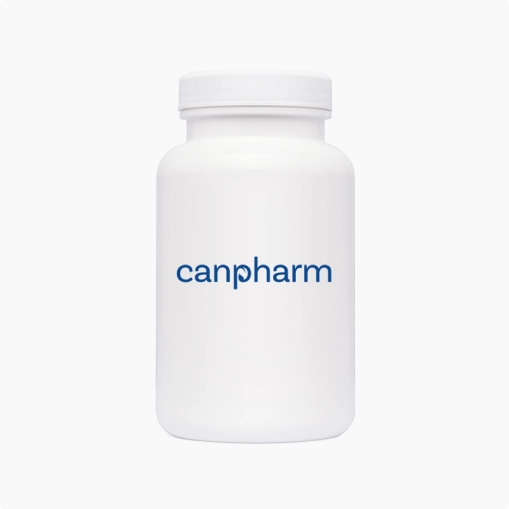
Gammagard Liquid (Immunoglobulin (Human))
| Dose | Size & Price | Qty |
|---|
-
Description
-
Reviews (0)
-
Related Products
-
Related Conditions
Fact Table
| Fact Table | |
|---|---|
| Formula | Not applicable (biologic product – mixture of IgG antibodies) |
| License | FDA approved |
| Bioavailability | ~100% (intravenous); lower for subcutaneous |
| Legal status | Prescription only |
| Chemical Name | Immunoglobulin G (Human) |
| Elimination half-life | Approximately 21 to 28 days |
| Dosage (Strength) | 10% solution (100 mg/mL) |
| Pregnancy | Use only if clearly needed; consult healthcare provider |
| Brands | Gammagard Liquid |
| Protein binding | High (IgG binds to Fc receptors and antigens) |
| PubChem CID | Not available (biologic product) |
| MedlinePlus | a605050 |
| ChEBI | 36080 |
| ATC code | J06BA02 |
| DrugBank | DB00028 |
| KEGG | D04570 |
| Routes of administration | Intravenous (IV), Subcutaneous (SC) |
Gammagard Liquid is a ready-to-use, sterile solution of Immunoglobulin (Human) indicated for the treatment of primary humoral immunodeficiency (PI) and multifocal motor neuropathy (MMN). It is derived from pooled human plasma and contains a broad spectrum of IgG antibodies. Patients seeking to buy Gammagard benefit from its proven efficacy in reducing infections associated with immunodeficiency and managing progressive neuromuscular symptoms in MMN. This formulation is suitable for intravenous (IV) or subcutaneous (SC) administration, providing flexible dosing options based on individual patient needs. Those considering Gammagard Liquid should consult their healthcare provider to discuss the appropriate therapeutic regimen and monitor Gammagard cost relative to insurance and infusion services.
Directions
Gammagard Liquid should be administered under the supervision of a healthcare professional experienced in immunoglobulin therapy. For IV use, the recommended dose for patients with PI typically ranges from 300 to 600 mg/kg body weight every 3 to 4 weeks. For SC use, a loading dose may be administered over several days, followed by weekly maintenance doses adjusted according to serum IgG levels and clinical response. Patients with MMN generally receive doses based on individual response and tolerability, with infusions repeated every 2 to 4 weeks. Infusion rates should be gradually increased as tolerated, with close observation during administration.
Ingredients
Each milliliter of Gammagard Liquid contains 100 mg of immunoglobulin G (IgG). The solution may also include small amounts of glycine as a stabilizer and water for injection. Gammagard Liquid is preservative-free and contains no added sugars, latex, or mercury.
Cautions
Before starting Gammagard Liquid, clinicians should assess the patient's renal function and thrombotic risk factors. Use caution in individuals with diabetes mellitus, volume overload, or a history of renal impairment. Ensure patients are well hydrated before administration. Monitoring is essential for patients receiving high doses or rapid infusions, particularly the elderly or those with comorbid conditions. As with all blood-derived products, there is a minimal risk of transmitting infectious agents, although rigorous screening and viral inactivation steps are applied.
Contraindications
Gammagard Liquid is contraindicated in individuals with a history of anaphylactic or severe systemic reactions to human immunoglobulin preparations. It is also contraindicated in patients with IgA deficiency who have developed antibodies against IgA, as they are at increased risk of hypersensitivity reactions.
Side Effects
Common side effects associated with Gammagard Liquid may include:
- Headache
- Chills or fever
- Fatigue
- Nausea
- Back or joint pain
- Local reactions at the injection site (for SC use) such as swelling, redness, or itching
Severe but rare side effects may include anaphylaxis, aseptic meningitis, hemolysis, renal dysfunction, and thromboembolic events. Immediate medical attention is advised if symptoms of a serious allergic reaction occur.
Frequently Asked Questions about GAMMAGARD LIQUID
What is GAMMAGARD LIQUID?
GAMMAGARD LIQUID is an immune globulin therapy made from human plasma. It contains immunoglobulin G (IgG) antibodies that help protect against infections. It is administered either intravenously (IV) or subcutaneously (SubQ), depending on the condition being treated.
What conditions is it used to treat?
GAMMAGARD LIQUID is approved for:
- Primary Immunodeficiency (PI): For patients aged 2 years and older, administered via IV or SubQ.
- Multifocal Motor Neuropathy (MMN): In adults, administered via IV.
- Chronic Inflammatory Demyelinating Polyneuropathy (CIDP): In adults, administered via IV.
How is it administered?
- IV Infusion: Delivered directly into a vein, typically every 3 to 4 weeks.
- SubQ Infusion: Injected under the skin, usually once a week.
Your healthcare provider will determine the appropriate method and schedule based on your specific condition and response to treatment.
What is the typical dosage?
Dosage varies based on the condition:
- PI: 300–600 mg/kg every 3–4 weeks (IV) or equivalent weekly doses (SubQ).
- MMN: 0.5–2.4 g/kg per month (IV), adjusted based on clinical response.
- CIDP: Initial dose of 2 g/kg divided over 2–5 days, followed by maintenance doses of 1 g/kg every 3 weeks (IV).
Dosage and infusion rates should be individualized based on patient response and tolerance.
Who should not use GAMMAGARD LIQUID?
Do not use GAMMAGARD LIQUID if you:
- Have had a severe allergic reaction to human immune globulin products.
- Have an IgA deficiency with antibodies against IgA and a history of hypersensitivity.
What precautions should be taken?
- Inform your healthcare provider about any medical conditions, especially kidney problems, heart disease, or a history of blood clots.
- Stay well-hydrated before and during the infusion.
- Monitor for any side effects during and after the infusion.
- Live vaccines may be less effective while receiving GAMMAGARD LIQUID; consult your doctor before vaccination.
How should it be stored?
- Store in the original box to protect from light.
- Do not freeze.
- Refrigeration: 2°C to 8°C (36°F to 46°F) for up to 36 months.
- Room Temperature: Up to 25°C (77°F) for up to 24 months.
- Always check the expiration date and inspect the solution for particles or discoloration before use.
